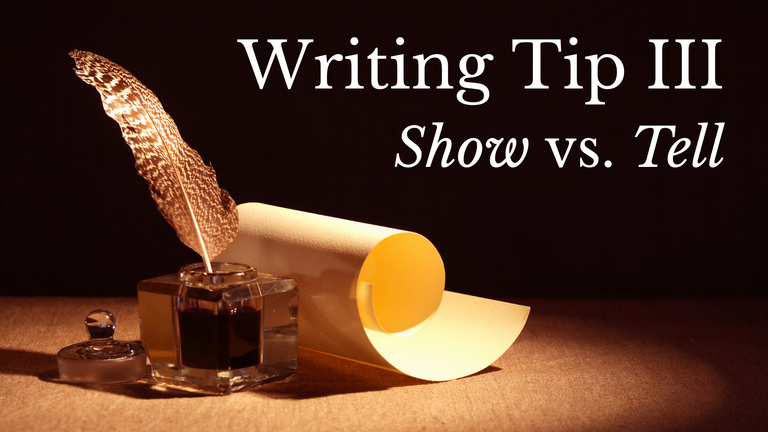
“Show, don’t tell,” is among the most common pieces of feedback that new writers receive.
I want to shine a different light on this phrase. “Don’t tell,” may be a little extreme. It’s easy to interpret it as a generalization, when in fact most editors mean: “Show, don’t tell in this particular instance.”
Rarely will you get feedback that says: “Hey, good job telling here instead of showing.”
💡 Yet both show and tell have purpose and utility in a well crafted story!
A recap of what’s meant by “Show, don’t tell”
The Ink Well covered this already, in this short but powerful tip. If you’re not familiar with “Show, don’t tell,” please read that piece first.

🖼️ Show versus Tell 🗣️
🖼️ Show
It’s true that show tends to be more powerful. It’s much more immersive and it’s also harder to get right and do well.
Show’s job is to draw a Reader into the Writer’s world by giving them a balanced amount of detail and context:
- Enough detail to paint a vivid picture
- Not so much detail as to overwhelm
- Contextual information, of course, varies
Enough detail is probably the easiest thing to think about. Writing It was hot out is much more tell than show.
- What kind of hot?
- How hot?
- Enjoyably hot?
Better and more powerful would be: Geraldine’s shirt stuck to her back, drenched in sweat as the sun beat down. Here we give more detail to paint a better picture:
- What kind of hot? – Not a “dry” heat, it seems (Reader can infer)
- How hot? – Hot enough to be sweaty (Reader can relate)
- Enjoyably hot? – Doesn’t sound like it (Reader can apply their own experience)
Too much detail is just as bad as too little. You might end up getting weird with dreaded “purple prose” or distract the Reader with needless information: The thermometer expressed its might, throbbing with a reading of 98.9 degrees Fahrenheit; Geraldine’s sweat glands responded as they must, expelling the salty substance of sweat like overripe fruit.
The above phrase might work in some contexts, but it’s way overwritten in general: too much detail, needless personification of sweat glands and thermometers, unnecessary description of sweat, etc.
🗣️ Tell
I want to give good ol' tell a fair shake.
There are a few things tell does very well:
- 🚄 Speeds up the prose
- 📦 Delivers uninteresting but necessary information
- 💠 Depending on context… can be masterful in its simplicity
🚄 Speeding up the prose is needed for several reasons. You want to vary the energy and flow of your writing so that the Reader isn’t ‘stuck’ in one kind of speed for too long. There aren’t any real “rules” around this energy flow and speed idea. It all depends on your style and voice. But in general, embracing intentional variety is a good idea.
A more direct and practical need for speed in prose is during an action sequence! Tell works great for scenes where things are literally happening fast. There isn’t much time for the character (and therefore the Reader) to stop and notice fine detail.
📦 Delivering necessary but boring info should be self explanatory. Often the challenge is in knowing what is and isn’t necessary.
Maybe the scene is all about our protagonist needing to run to catch a bus. The bus is being driven by the antagonist, and we want this scene to capture interplay between the driver and chaser. In this case, quickly stating that It was hot out may just be enough if the focus is elsewhere.
💠 Context. Imagine if the story took place on Pluto, and the protagonist had spent 10 years in a special weather dome. A disaster forces her to leave, and she fully expects to die in the icy vacuum of space as she “escapes” from the disaster. Dropping the simple sentence It was hot out as a ‘tell’ would have huge impact here, since that makes no sense on Pluto.
Hopefully this tip helps illustrate that the idea of ‘Show don’t Tell’ isn’t as extreme as it may seem. However, less experienced writers do tend to over-tell, so it remains a poignant piece of advice!

About the Scholar and Scribe Community



